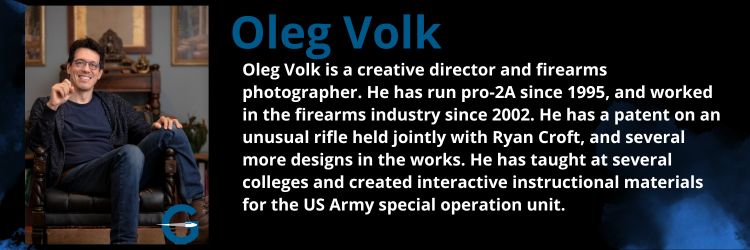Light Weight for the Summer: Range and Hunting Trips
The classic American icon, the Tommygun, was heavy and overlong in the stock. Its inventor, Brigadier General John T. Thompson was an unusually tall man, and his invention was a great fit for the designer’s 6ft 3in frame. For the average man, less so. And even less for an average woman. Weight matters, even for the young fit infantrymen; they get to wear armor and comm gear, spare ammunition, water, med kit, and other sundries that add up quickly. While much of that weight rides on their hips and shoulders, rifles have to be held up steadily with arms.
A seven-pound rifle doesn’t sound like much, but add an optic, a light/laser combo, a bipod, a foregrip, a sound suppressor, rail covers, much of that forward of the center of balance, and the total ends up being massive. The issue isn’t just the full-up weight but the inertia that slows down the pointing of the weapon.
Making this issue even more important is the diversity of shooters. In the past month, I trained a woman of 86 and a girl of 7. Neither of them could handle a heavy firearm, nor much recoil. I personally do not lack endurance, but a carbine or a sidearm usually competes for the weight allowance with camera gear and potable water. “Heavy is a sign of reliability” makes for a good soundbite but doesn’t always reflect reality. A person overburdened with gear can’t perform with it, can’t run, and would suffer reduced endurance. What can be done?
Light Logistics
Logistics rule. Before we even get to lightweight guns, let’s optimize the ammunition and magazines. Bringing two types of magazines in two calibers, such as 5.56mm and 9mm, usually results in less weight and bulk than having to pack full loadouts for multiple calibers and magazine styles. This comes into play not just for backpacking, but also when traveling by air. Similarly, bringing on AR15 lower and three uppers saves weight compared to three complete rifles.
Quality design optimized to a specific task also rules. A carbon fiber wrapped barrel works just fine for a hunt in which not even one magazine would be emptied. A 16in pencil-thin barrel capable of sustaining two magazines back-to-back is reasonable for a home defense rifle, while a 20in HBAR perfect for Army qualification course or six magazines in a row is less ideal.
Weight is less critical for recreational guns because they are carried mainly when use is expected. It’s critical for defense weapons simply because they won’t be worn if too bulky or heavy. And it’s critical for military arms due to the sheer amount of vital accessories necessary for night fighting, launching grenades, other specialized tasks. How can the weight goals be reached?
Materials
Materials selection helps. An aluminum alloy S&W revolver kit gun in .22 or the polymer Keltec P17 semiauto equivalent weigh in at 13-14oz loaded. Forstech FLITE series shaves nearly two pounds off AR15 weight with magnesium and aluminum alloy parts throughout. Keltec SU16 accomplished the same with polymer upper and lower receivers. A number of barrel makers wrap thin rifled liners with carbon fiber wrappers, terrific for weight reduction at the cost of heat endurance.
Skeletonizing helps. With forends, it reduces weight while improving airflow around the barrel. Skeletonizing other parts has to be done with consideration for dirt ingress, gas flow and oil seepage out of the action. Fluting helps, both with barrels to reduce weight while increasing cooling surface area and with receivers to reduce weight while forming fencing around controls to avoid accidental activation.
Design
Advanced action design helps. A plain blowback gun is simple and generally too heavy in any serious caliber. Delayed or retarded blowback may be inflexible on cartridge variety but reduces overall weight for the same recoil level. Locked breech designs are even better at that, reducing the weight and the kick at the price of more complicated designs. Increased bolt overtravel, such as employed by Ultimax 100 and Keltec RDB, keeps recoil down even more with lighter overall weight, the tradeoff being a fractionally longer receiver.
Weight reduction can be detrimental to accuracy. A 5 pound rifle with a 100-round drum magazine will shoot to a different point of aim once the a couple of pounds of ammunition are used up. An overly thin barrel without sufficient stress relief may warp from heat. Durability of a gun designed for high volume of fire can be compromised, as was the case with Cetme Ameli: at 2/3 of the weight of FN Minimi but similar duty, these light machine guns didn’t last.
Effectiveness
On the other hand, weight reduction is critical for effectiveness. For a nature hike, a polymer frame pistol holding 18 rounds is usually a win over a steel frame pistol holding 9 for the same overall weight once spare magazines are counted. If small game meat hunting during a photo safari is in order, a lightweight pistol with a micro red dot might beat a full-size rifle if expected distances are short.
The bulk of the weight allowance can go to the photo gear, which would also be easier to handle around a holstered pistol than around a slung rifle. Even for a recreational hiker, other necessities besides defensive weapon compete with it — water, med kit, comm gear, food, a tent, a small child tired of walking and riding on the shoulders. Carrying more weight looks macho but wears out the knees and the vertebrae.
Weight can always be added with accessories. Design for efficiency. A matchlock musket may be heavy and reliable, but there’s no denying that Stoner’s Poodleshooter is more effective — and much easier on the back on a long hike.
Written by: Oleg Volk, Firearms Photographer


